The summer’s end is here, and those cool mornings are a hint of things to come. Wildflower selection is changing too, heralding autumn. Sticking to the more ‘classic’ flowers of late summer, here’s some of the blooms I’ve seen this month.
Wingstem is an excellent wildflower to highlight this month. There’s a good amount of it around, it being one of a number of yellow sunflowers and coneflowers that are dotting the late summer countryside (though technically it’s a member of the Aster family). Its petals are swept back, and the central flower area is ‘spiky’, which separates it from some of the more traditional prairie and field plants in bloom right now.
Speaking of all of those yellow prairie-style flowers out now, here’s a look at some others:
Three-Lobed Coneflower
Black-Eyed Susan
Grey-Headed Coneflower
Green-Headed Coneflower
Notice the leaves are a darker green and thicker-lobed than its cousin the Grey-Headed. It blooms later in the season, too.
Cup Plant
Note how the leaves clasp the stem of this plant- water can collect in this ‘cup’ area, providing settlers with a convenient drink; hence the name.
Helianthus
Helianthus is a name of a particular genus of plants in the Aster family- think of them as sunflowers. These plants can be hard to tell apart, and they hybridize, too. A few of the more well-known plants of this type are Ox Eye, Jerusalem Artichoke, and Woodland Sunflower.
Hairy Sunflower
The stiff upswept leaves help identify this prairie flower.
Whorled Rosinweed
This tall prairie plant has whorls of 3 leaves spaced along the stem.
Prairie Dock
Perhaps the most notable prairie plant, with its large flowers and massive basal leaves. This plant can reach 10 feet tall.
Other prairie flowers:
Purple Coneflower
Wild Bergamot
Blazing Star
Cardinal Flower
Perhaps Ohio’s reddest wildflower.
Other notable and numerous late summer plants:
Queen Anne’s Lace
Some call this plant Wild Carrot.
Chicory
Its roots are sometimes used as a coffee substitute.
Fleabane
This has been in bloom since last spring, but now white Asters are starting to bloom, so you can’t just assume it’s all Fleabane now!
Ironweed
My favorite midsummer wildflower.
Evening Primrose
Sweetclover
Sneezeweed
JoePyeWeed
Lady’s Thumb
Obedient Plant
Self-Heal
Wild Lettuce
Blue Lettuce
Horseweed
This plant is prominent in waste areas and can fill whole fields. It can interfere with planted crops.
Pokeweed
There are different types of Thistle, such as Field Thistle and Bull Thistle.
Canada Thistle
Biennial Guara
Foxglove
Curly Dock
This plant is more often rust-colored than green in late summer.
Birdsfoot Trefoil
This plant looks like all of its petals have been nibbled off- but there’s no petals!
St. John’s Wort
Spiny-Leaved Sowthistle
Monkey Flower
This uncommon plant can be spotted in moist areas.
Common Teasel
Its purple blooms are often browning by now.
Cut Leaved Teasel
Its white blooms separate it from Common Teasel. It blooms later, too.
Snakeroot
This classic late summer plant is slowly increasing in number.
Boneset
This plant likes moist areas, and can be identified by its leaves that hug the stem.
Mountain Mint
There are a few plants that look like Morning Glories:
Bindweed
Morning Glories
These classic flowers can be seen in white, purple, blue and red colors, sometimes growing on cornstalks in farmer’s fields.
Greater Ragweed
Lesser Ragweed
If you suffer from hay fever, Ragweed is often the culprit!
Tall Bellflower
Agrimony
Often found along wood edges.
Blue Vervain
Nightshade
Its purple blooms are often accompanied by berries now.
Common Burdock
Yarrow
Crown Vetch
Jewelweed
A favorite of Hummingbirds, found along wood edges.
Woodland plants:
Wood Nettle
These can sting, be careful!
Jumpseed
Leaf Cup
Wetland plants:
Cattails
Purple Loosestrife
Swamp Rose Mallow
Swamp Milkweed
Seen around the yard:
Dandelion
Clovers
Plantains
Wood Sorrel
And finally, autumn foliage slowly but surely starts blooming:
Goldenrod
Asters
Stay tuned for more autumn flowers to come!

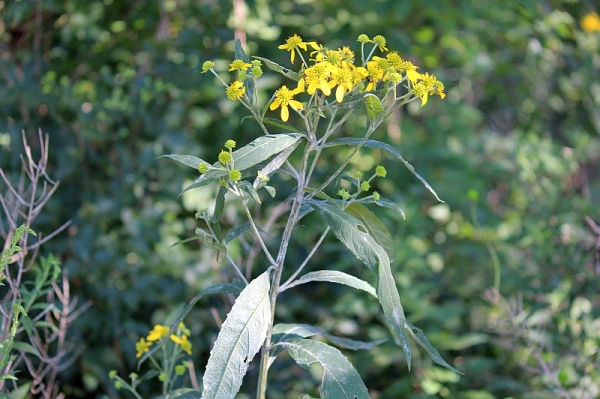
















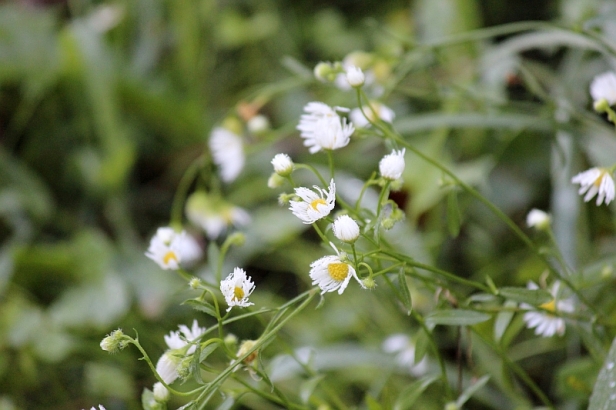



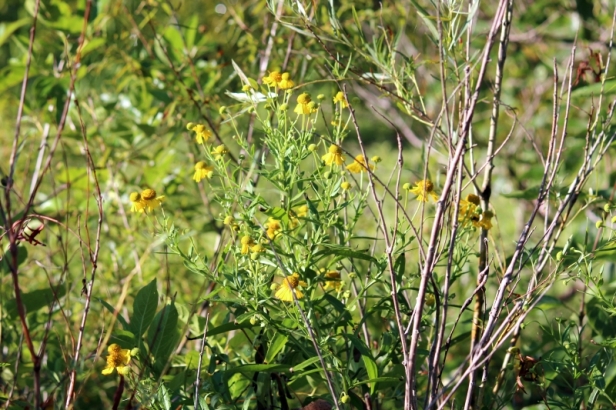







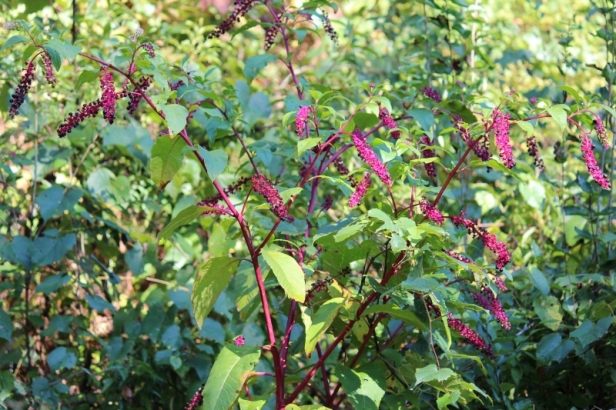






















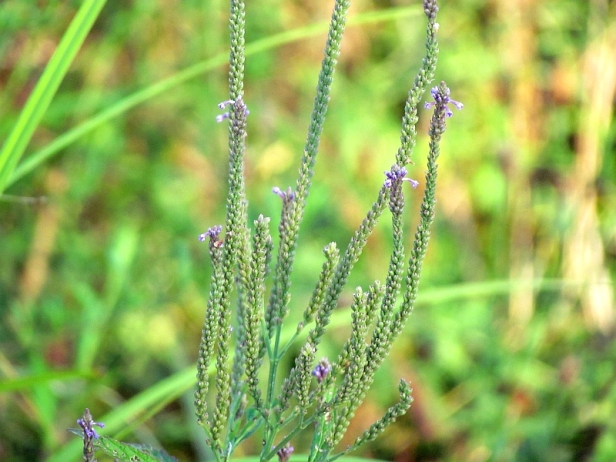





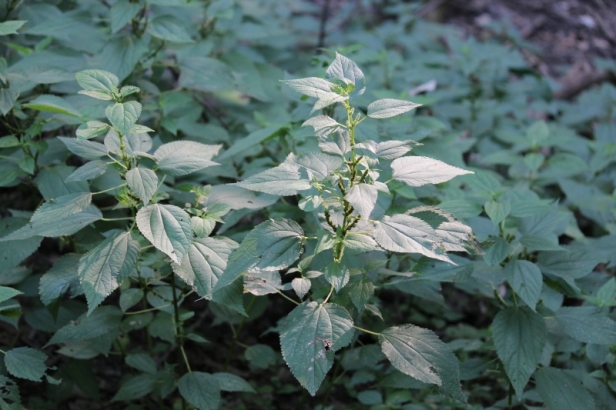







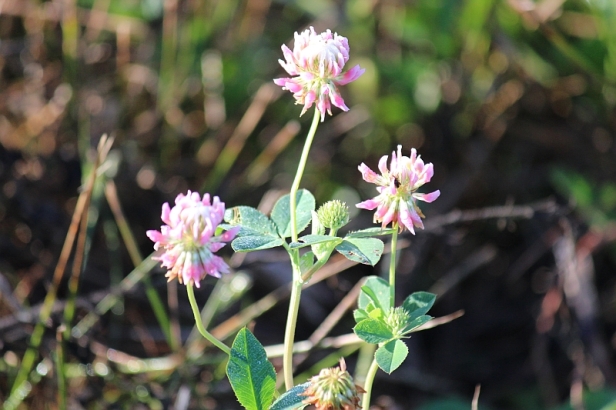







Great photos and info! So helpful in making IDs.
Thanks Pat! It’s taken me a while to figure out some of these flowers, and I’m sure I’m still making some mistakes here and there. Nothing keeps you guessing and humble like Mother Nature!
You really know your flowers, great post.
Thanks Les, plenty of the sunflower-y ones blooming right now!
Very nice, as always!
Many thanks, Joleen!
What a great collection. Thanks for ID’ing so many for us!
Hope I helped a little, Ogee- thanks!
Beautiful August blooms. Ohio is truly blessed with flowers so radiant in glows like sunshine. Thanks.
So true, Island Traveler! Many thanks for visiting, I recommend your fantastic site to everyone- http://thismansjourney.net/
Hi. I like the photo of the Nightshade, and the Jumpweed is one I haven’t known about before! Thanks! Jane
Hello Jane! It’s been sort of a quiet summer in the woods as far as wildflowers go, Jumpseed (Polygonum Virginianum, also known as Virginia Knotweed http://www.ct-botanical-society.org/galleries/polygonumvirg.html ) has been the most numerous bloomer that I’ve noticed. It’s a modest little plant that isn’t the easiest to photograph.
Jane has a creative and interesting blog at http://nichepoetryandprose.wordpress.com/
I love your posts like these, beautiful photos and great information!
Many thanks, Prairiebirder!
I love all those flowers. The purple coneflower I know doesn’t look anything like that, though.
Thanks, Song of the Wolf! Purple Coneflowers are sort of individualistic in their appearance, depending on their age and the soil conditions (that’s my guess, anyway!)
gorgeous gorgeous close up shots!
Thank you Marina- I enjoy your photo essays a lot!
What what a summer collection! I can really appreciate the work you put into this post and thank you for it! We have some of these species here but others were brand new to me and I loved seeing them!
Many thanks, Montucky! I enjoy your wonderful photos from Montana, which is quite a bit different from Ohio to be sure!
So pretty! You find many nice things to share with us.
Thanks Patti- nature’s palette is in full glory this time of year 🙂
Hi Season, We have a few of these here on my place here in TN. You have taken a nice set of pictures. Nature sure does give us outstanding views. Have a wonderful Wed. tomorrow!
Many thanks, Wildlifewatcher! It’s a good season to be a wildflower watcher!
Gorgeous photos. I admire the time and heart that you put into taking the photos, uploading the photos and putting them in order and writing their names and captions. You’re amazing. Thanks for making the blogging world a prettier and more enjoyable place. 🙂
Many thanks, E.C.! Originally when I started this blog, it was with the idea of learning as I go about nature and sharing the results with others. Glad you’re finding it useful!
You’ve got a lot of plants blooming that I haven’t seen here, like the rosin weed and rose mallow, and the ever elusive teasel. The English plantain is a good find-I’m not even sure if we have that here. Excellent post-thanks for the effort.
Isn’t it interesting how one state’s abundance is another state’s elusive possibility? Plantain and teasel are incredibly common here in Ohio. The Rosinweed is a tallgrass prairie plant so that makes sense, seeing there isn’t much in the way of prairie east of Ohio- as far as I know anyway! The Rose Mallow I’ve only regularly seen along the Scioto River, I’m sure it’s around elsewhere in areas I frequent less often.
I saw a lot of familiar plants here… I’m ready for Autumn’s changes.
Me too, Robin! I’ve had enough 100-degree weather for a while 🙂
What a stunning collection of flower photos! I also watch the wildflowers as a sign of the changing seasons–and am usually both happy and sad for the change.
Thanks Inger! This time of year you notice how rapidly the wildflowers can change.
Aah, I was wondering about a purple or blue flower I’d seen this year–it’s either Obedient plant or self heal. Saw one in the woods that looked a little different from the prairie ones, so maybe a self-heal? Your blog is beautiful. Good to see you enjoying your well-earned time off!
Many thanks, Mary!
Plants are interesting- I’ll occasionally see one that I can’t identify. Sometimes I give a made-up name to a mystery plant and scour identification books and the internet until I happen upon it (sometimes by happy accident) and then I know what it is.
The way I look at it, I like having plenty to learn- it would be terrible to know everything and take away the wonder and mystery of the natural world 🙂
An encyclopedia of Ohio summer wildflowers. Great job!
August is a great flower month, Robert!
This was really helpful -I had a flower that I was having trouble IDing -Biennial Gaura -thanks for helping me with this!
Glad it was helpful, Donna!
I am having trouble identifying a wildflower I see now here in ohio. Tall purple. It looks very much like the Ironweed but it does not have the red stem. It has the same type purple flower and a green stem. Don’t see it here. Beautiful photos.
Thanks Bobbie Jo- another tall purple wildflower seen at this time of year is Queen Of The Prairie…or perhaps it is another species or variation of Ironweed or Joe-Pye Weed?
Your photo at the beginning of your article is of a flower that is in abundance along the road where I live. But you did not give the name of it. And I am frustrated in not being able to identify it. I don’t think it is wingstem. But it sure looks like the one in your photo.
It is indeed Wingstem (and is so labeled in the second caption). One of the most abundant plants in Ohio in August!
Looking at it again, there is a rather small “wing” on the stem. So, I am sure you are correct. Thank you !! I feel better now. -Richard Swanson
Great to hear and glad to help, Richard!